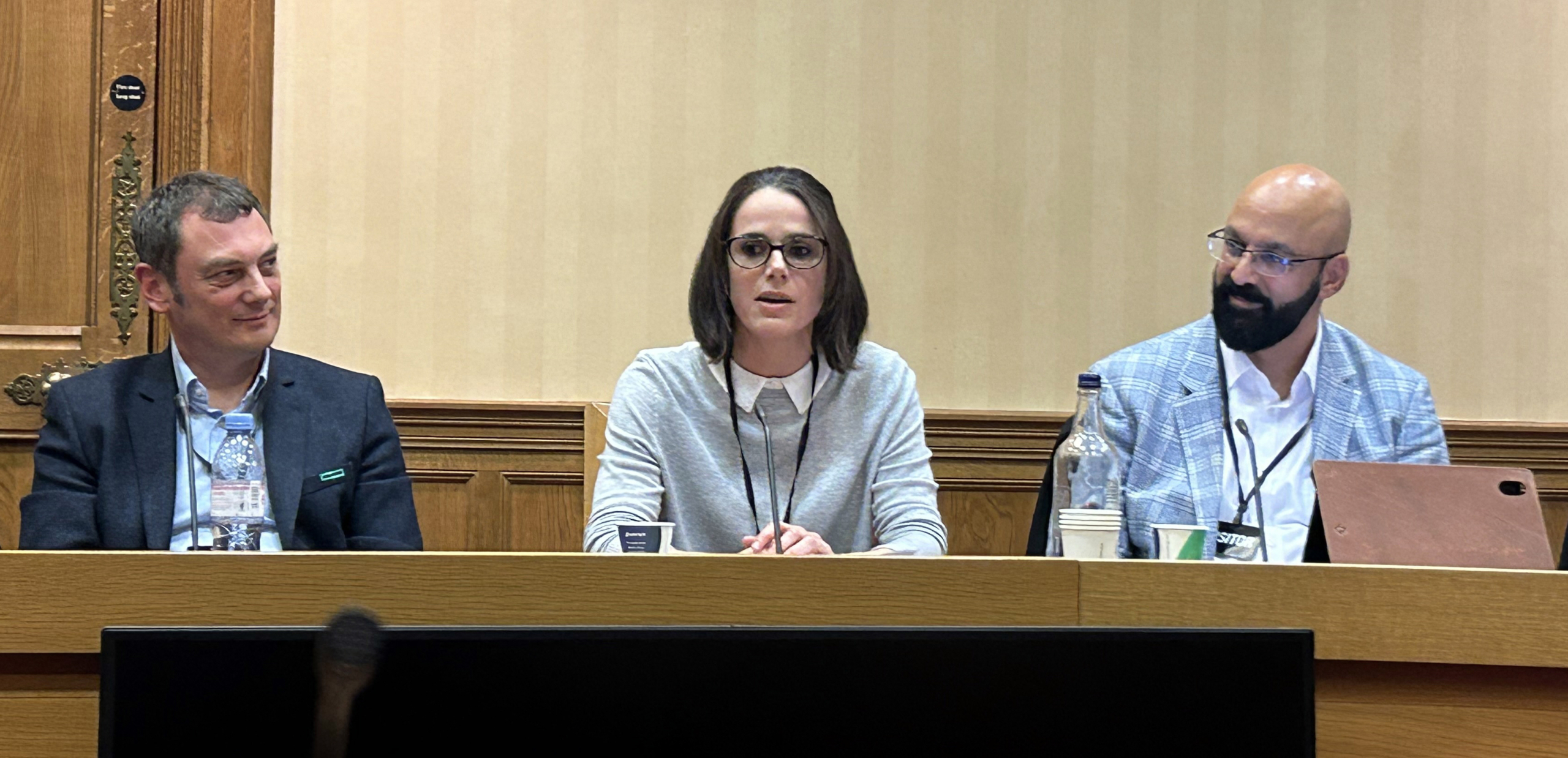Earlier this week, I presented Carbon Re’s work in Parliament, at an Evidence Meeting of the All-Party Parliamentary Group on Artificial Intelligence (APPG AI), chaired by Lord Clement Jones CBE and Stephen Metcalfe MP.
The focus of the meeting was to explore the immense potential of AI in contributing to the achievement of the globally imperative UN Sustainable Development Goals (SDGs). My fellow speakers included Matt Armstrong-Barnes, Chief Technology Officer – Artificial Intelligence, Hewlett Packard Enterprise, Hugh Eaton OBE, Former Vice President – Worldwide Government at Microsoft, Professor María Pérez-Ortiz, Associate Professor of AI & Sustainability, UCL and Tarun Rishi, AI Innovation Consultant, About Alpha.
Drawing on our respective areas of expertise, we each presented on how specific SDGs can benefit the most from the power of AI and highlighted the associated risks. Following our presentations we took questions from the floor and held a candid and lively discussion (under Chatham House rules) with the audience on the specific opportunities, and the potential pitfalls and obstacles that AI poses to the realisation of these goals.
This meeting was part of a wider process of investigation into AI – the benefits and the pitfalls – which will include the world’s first Global Summit on AI Safety on 1 & 2 November at the iconic Bletchley Park, where Alan Turing (he of the eponymous Institute) spearheaded the development of the first computer.
Alignment with the SDGs
Carbon Re’s software solutions directly align with at least three of the Sustainable Development Goals: Industry Innovation and Infrastructure (Goal 9), Responsible Consumption and Production (Goal 12), and Climate Action (Goal 13).
We are on a mission to reduce gigatonnes of industrial emissions from cement and other foundational materials (such as steel and glass) which are responsible for more than 20% of global emissions. Starting with cement, which accounts for 8% of global greenhouse gas emissions, we are focused on reducing fuel-derived carbon emissions by using AI to improve process efficiency.
Cement has an indispensable role in modern construction, and global demand is increasing. While we see the emergence of new technologies and materials, cement is still the best and most ubiquitous material for the job and it is vital that we can continue production in the most efficient way possible.
Today, deploying Carbon Re’s AI-powered technology has the potential to reduce fuel consumption by 5-10%. Significantly, this can be achieved using existing infrastructure and hardware without fundamentally changing how we are producing these materials today, and for a single cement plant, this translates to the equivalent of removing 11,000 cars off the road every year.
With over 3,600 cement plants globally, the potential importance of Carbon Re’s AI software, cannot be overstated.
Act now
Globally we are not on track with any of the SDGs so solutions like ours are vital if we are going to make any significant inroads towards these specific goals by 2030.
We need immediate climate action now. Achieving large emissions reductions by 2030, without ever reaching net zero, delivers a significantly better result than reaching net zero through a big improvement between 2040 and 2050. This was a topic also stressed by Jim Skea, the new Chair of the Intergovernmental Panel on Climate Change (IPCC) on BBC Radio 4’s Today programme, who urged immediate action at next month’s COP28 meeting.
What can the UK government do?
The evidence session also aimed to gather specific policy ‘asks’ for the UK government to consider as part of its climate strategy.
Carbon Re’s three specific policy recommendations are:
1. Prioritise funding to:
Support climate tech companies that can develop and deploy solutions at speed and scale now
Help industrial producers to implement short-term decarbonisation measures (the majority of funding is focused on CCUS – which is crucial, but we should also be looking at other measures such as AI deployment)
2. Update the definitions of Best Available Techniques methodology which is best practice guidance from government, used by industrial producers to reduce pollution. It should include software solutions for process optimisation.
3. Invest in education and training in Industrial AI – to build the necessary technical expertise and to foster collaboration between government, industry, and technology providers to drive innovation and adoption of AI. For example, this could be a centre for industrial AI sponsored by the Department for Business & Trade.
At Carbon Re, we see ourselves as part of the longer term solution to climate change by developing technologies that understand the complexities of production environments and the fundamentals of how these materials are made.
Using the power of AI, we believe that cutting edge advances in materials development is a possibility and we believe that an AI transformation will be a game changer for cement, steel & glass production.
A full write-up of the APPG AI event will be available on BIC Pavilion.


